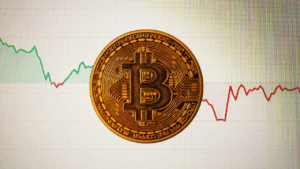4 Key Factors Driving Bitcoin to $120K: A Price Rally Ahead?

Bitcoin Price Target Set at $120,000: Key Factors Driving the Bullish Outlook
Multiple market analysts have identified a price target of $120,000 for Bitcoin this year. Recent events have bolstered this optimistic perspective, influenced by four primary factors: the current spot price, central bank policies, trends in the energy market, and technical indicators. Let’s delve into these elements in detail.
Bitcoin’s Resilience Above $100,000
A crypto trader recently emphasized that the most effective marketing for any asset is its price, echoing the reflexivity theory proposed by renowned trader George Soros. Soros articulated that market perceptions and prices create a feedback loop—rising prices attract more buyers, which further elevates prices, often beyond what fundamentals would suggest.
In this light, Bitcoin’s ability to maintain prices predominantly above $100,000 amid geopolitical tensions, such as the Iran-Israel conflict and U.S. military actions, showcases its inherent strength. This stability can instill confidence in current holders and draw in new investors, potentially propelling prices even higher. Notably, recent minor dips below the $100,000 mark have seen a surge in buying activity, reflecting a prevalent “buy the dip” mentality among investors.
Nicolai Soendergaard, a research analyst at Nansen, noted that the observed exchange outflows indicate that both retail and institutional investors are seizing opportunities to buy during price declines. He remarked that historically, geopolitical disruptions often lead to short-term price drops, which tend to recover based on the severity of the events and their communication.
Data from Glassnode reveals that since June 10, there has been a 29% increase in investors categorized as Loss Sellers, indicating rising pressure on less committed holders. However, the number of Conviction Buyers has also risen, suggesting that overall sentiment remains resilient. Some investors are opting to cut losses, while others are actively working to reduce their average purchase price.
Shifts in Central Bank Policy
Easing liquidity, often signified by interest rate cuts from the Federal Reserve, generally favors both stock and cryptocurrency markets. Recently, some Fed officials have shown openness to the idea of a potential rate cut in July, which contrasts with Chairman Jerome Powell’s historically data-driven approach.
ForexLive’s Chief Currency Analyst, Adam Button, commented on this shift, noting that two previously hawkish Fed officials have recently adopted a more dovish stance. This change could signal a broader trend within the Fed, especially as discussions around interest rates heat up.
Fed Governor Michelle Bowman indicated that the impact of tariffs on inflation might be less significant and take longer to materialize than initially thought, expressing support for a rate cut next month if inflation remains manageable. Similarly, Fed Governor Christopher Waller echoed this sentiment, advocating for a rate reduction in July.
Button humorously suggested that this shift could represent a “MAGA takeover” of the Fed, highlighting former President Donald Trump’s consistent preference for lower interest rates throughout his career. As Chairman Powell prepares for his upcoming testimony to Congress, he is expected to reaffirm the Fed’s independence and data-driven approach, while facing scrutiny from Republican lawmakers regarding elevated interest rates.
Decline in Oil Prices
The market’s expectations regarding crude oil have recently proven to be misguided. Following military actions in Iran and concerns over potential disruptions in the Strait of Hormuz, many anticipated a surge in oil prices. However, contrary to these expectations, oil prices plummeted on Monday.
This decline is favorable for central banks that are wary of the inflationary effects that a spike in oil prices could have on the economy. Such secondary effects often include increased transportation costs, higher prices for goods reliant on oil, and potential wage increases, all contributing to overall inflation.
James E. Thorne, Chief Market Strategist at Wellington Atlus, remarked on the unexpected drop in oil prices, suggesting that the anticipated inflationary pressures may not materialize as previously feared.
Positive Technical Indicators for Bitcoin
Current momentum indicators, particularly key moving averages, are aligning in a bullish manner. The 100-day simple moving average (SMA) has recently crossed above the 200-day SMA, following a previous bullish crossover between the 50-day and 200-day SMAs.
This arrangement of the three widely monitored moving averages forms a classic upward-sloping bullish momentum pattern. A similar configuration was observed in November of the previous year, which remained intact throughout the rally that saw Bitcoin rise from $70,000 to $100,000.
In summary, the combination of Bitcoin’s resilience, favorable central bank policies, declining oil prices, and positive technical indicators paints a promising picture for the cryptocurrency’s future, with many analysts eyeing the $120,000 target as a realistic goal for this year.







